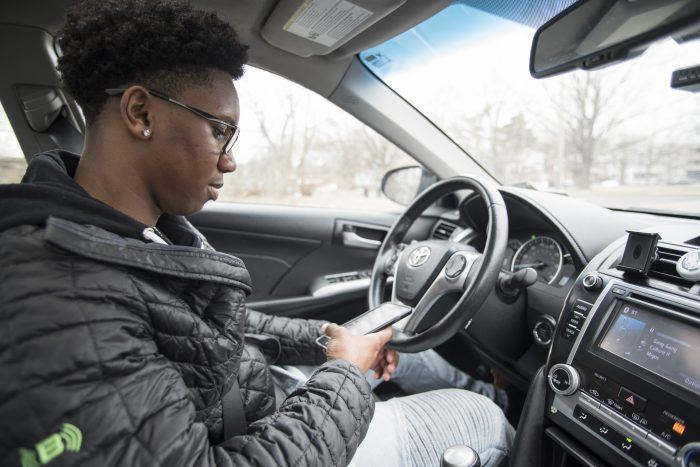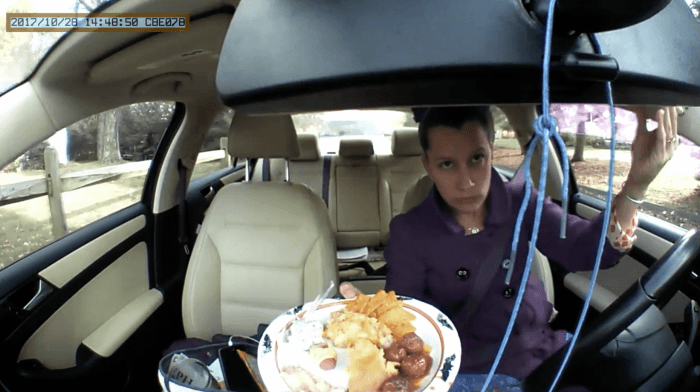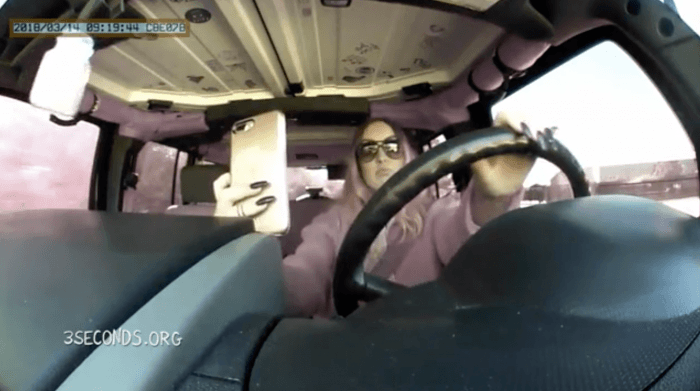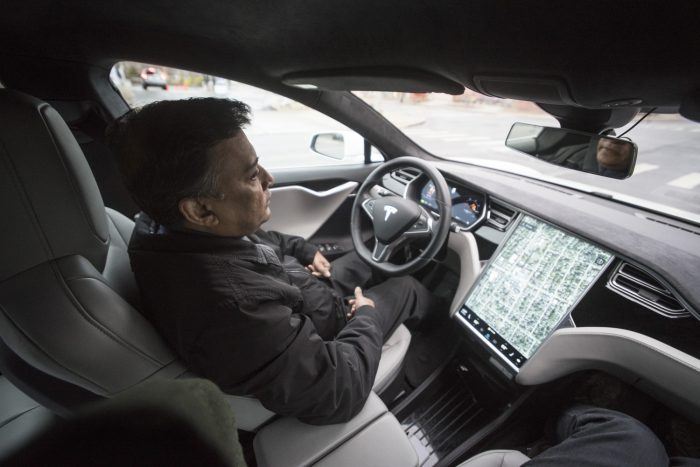3 Seconds Behind the Wheel Overview
- 3 Seconds Behind the Wheel is a new documentary and podcast series.
- The film shows how frequently distracted driving occurs by following eight different individuals.
- Boyd Productions and Connecticut Public Television gathered hundreds of hours of footage.
- Leading minds showcase how new technology may help curb distracted driving.
An interesting documentary landed on my desk recently titled 3 Seconds Behind the Wheel. Three seconds is the time it takes to travel a football field while driving. Coincidentally, that’s the amount of time it takes the average driver to do something like look at a text message, choose a song or, even worse, reply to a text message.
The movie states upfront that it is not here to scare you, and in that, they are right. This is not one of those horrid driver’s education films from 1964 with lots of rock-a-billy and misspent youths and screeching tires and regrets.
3 Seconds Behind the Wheel is 55 minutes of exploration of not only distracted driving but also trends in smartphone usage, autonomous cars, and augmented driving. That’s a fairly nice way of saying, narrative-wise, 3 Seconds Behind the Wheel is rather meandering and has a hard time getting to any one point. And, most crucially, it seems to not fully understand the point it is ultimately hoping to make.

Honest & Intimate
3 Seconds Behind the Wheel is divided into three critical chunks. The first is a look at a data analysis firm that conducted a study of rather delicious deviousness. They mounted a bunch of cameras inside the cockpits of various cars, and pared that footage with accelerometer data from the driver’s phones. And not just any drivers, but a lot of teenagers. Those that have driven with or recall what you drove like as a teenager will readily know it can be frightening.
But I’m not just talking about hot-rodding reprobates out looking for cheap thrills and jazz music, oh no. I’m talking about drivers of all ages that are constantly on their phones or are constantly distracted. Everyone in 3 Seconds Behind the Wheel spends a terrifying amount of time reading texts and responding to them, plus full-on jamming to tunes with both hands off the wheel for long stretches. We’re talking Neil Peart-level air drum solos!
And eating food while driving . . . even eating it off plates with plastic utensils!
“While many of these driver’s habits will shock you, this is a very honest and intimate look at human behavior,” said Executive Producer Jennifer Boyd of Boyd Productions.

The Things We Do Instead of Driving
All of this is accompanied by some juicy rationalizations: “Oh! The reason I was eating that was because I got the food like that, on a plate, at a birthday party. Swedish meatballs.” I’m not sure what the mitigating factor is here: the fact that she got the entire plate of food at a birthday party or that it was Swedish meatballs.
Nevertheless, all of this in-car footage makes you wonder, “Do I really pick my nose that often?”
“You’re in kind of a private space that is typically reserved for just the driver, and now you get to observe a lot of these things that are going on – that we all do,” explained Eric Jackson, Director of the Connecticut Transportation Safety Research Center at the University of Connecticut. “But you don’t think about it until you start watching the videos, and you’re like ‘I do that.'”
Global Concern
It’s not just in the United States either. A survey conducted by Carzoos found that 75 percent of Australians eat while driving, and another 55 percent use a mobile device. The same study found that 25 percent of women aged 25 to 34 apply makeup while driving.
“We don’t have a distraction epidemic; we really have an attention epidemic,” said Bryan Reimer, Research Scientist, MIT. “I think that we really need to begin asking the question: What is distraction? Could it be that the act of driving has become the distraction from the communication and infotainment world that we all live in?”
The European Transport Safety Council reported last year on surveys conducted by Ipsos and Dekra. Ipsos found that 36 percent of drivers in the Czech Republic use their phone behind the wheel; Dekra found around 25 percent in Spain and Ireland did the same. And in a bizarre yet tragic case two years ago in Japan, the Pokémon Go game was a factor in a fatal accident.
“In today’s electronic digital age, it seems impossible for some people to resist answering phone calls or responding to text messages or Snapchat, Instagram, Twitter, or Facebook posts even while behind the wheel,” said Special First Lieutenant and Traffic Safety Specialist Jim Flegel of the Michigan State Police. “When a person drives distracted one time, and nothing bad happens, they think they can do it all the time with the same results. This is not true! It only takes being distracted for a brief moment before a tragedy can occur.”

Just Google It
3 Seconds Behind the Wheel then drifts towards talking about automated driving. There’s no real clean break when they move from act one to act two, so it doesn’t work all that well. Still, the producers talk with people at Google working on better strategies for UIs (user interfaces) in the automotive world. Things like where the yes tap should be versus the no tap versus the go back tap on a smartphone screen.
Google has a very nice driving simulator rig with multiple screens and umpteen ways of tracking the driver being tested; facial expressions, eye movement, eye gaze, how long your eyes linger on a given point, body language, head motion, and speed – just thousands of data points to draw from. Curiously, the Google folks make no mention of voice recognition or voice control.
The producers give some passing time to talking about Tesla’s Autopilot, although they (like Tesla) point out how it’s not a real “set it and forget it” autopilot.
Possible Solutions
Ultimately, 3 Seconds Behind the Wheel tries to show what industry experts and entrepreneurs are doing to improve road safety. Recent data from the National Safety Council suggests roadway deaths this year may climb as high as 40,000.
It is at this point the film gets to what I’m guessing is the whole point: augmented driving. This segment has the most narrative and methodological oomph behind it, but the producers never really come out and state it. As a matter of fact, the film never uses the term “augmented driving,” but that’s what it is. They talk with a National Transportation Safety Board accident investigator about autonomous versus augmented systems.
We also meet a Swedish automotive engineer from Autoliv who backs up what the NTSB guy says.
In so many words: taking humans completely out of the loop is a bad idea.

Human Intervention
The logic presented in 3 Seconds Behind the Wheel goes something like this: we don’t want the machine doing everything, because machines are bad at thinking on their feet during random, chaotic events. What we want is the machine doing most of the thinking, and then, if things go all cock-eyed, the human intervenes and solves the problem.
Other experts share similar views, and even offer real-world situations where human involvement might be the better option.
“When a driver approaches a ball in the street, they can determine that perhaps a child is following. Of course, you can tell a computer this simple script, but a human can determine the many different types of balls that could be in the road,” said Saskia de Craen from the SWOV Institute for Road Safety Research during AutoSens Brussels last year. “The point is that people are very good at adapting in situations like this, and computers do make mistakes.”
3 Seconds Behind the Wheel examines how airline manufacturers have the ability to automate the entirety of a flight, but don’t. Human pilots control the take off and climbing to altitude. Once the plane is cruising eight miles high, then they switch on the automatic systems. Autoliv is working on something similar. The car can and does drive itself, but urges you to take the wheel when it feels you’re the better option.
Key Considerations
This film should present very few (if any) surprises to us grease-stained gearheads. We already know this. We already know we’re not driving a phone booth or a diner, or a beauty parlor. When driving a car, we are doing so with the appropriate levels of care, dedication, and skill that our love for cars demands.
3 Seconds Behind the Wheel, in short, is not for us gearheads. It is for those other lack-wits out there we are forced to share the road with. Let’s hope they’re watching this movie and paying attention.
Tony Borroz has spent his entire life racing antique and sports cars. He is the author of Bricks & Bones: The Endearing Legacy and Nitty-Gritty Phenomenon of The Indy 500, available in paperback or Kindle format. His forthcoming new book The Future In Front of Me, The Past Behind Me will be available soon. Follow his work on Twitter: @TonyBorroz


